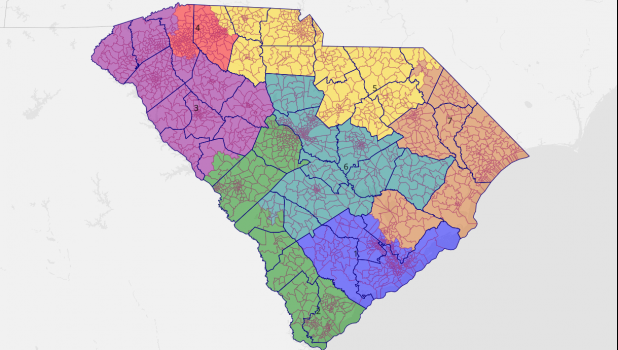
The Daniel Island News, October 27, 2021
Op-Ed by Lynn S. Teague, Vice President, Issues & Advocacy, League of Women Voters of South Carolina
After every federal census, our legislative districts are redrawn, shaping elections for the U.S. House of Representatives, the South Carolina State House of Representatives, and the South Carolina State Senate for the next 10 years.
In South Carolina, this is done by members of the General Assembly. It should surprise no student of human nature that legislators too often draw districts that serve their own interests rather than those of voters. Their hope is to achieve the holy grail of self-interest, a comfortable “safe” district in which the outcome of general elections is determined in the map room, not the voting booth.
In contrast, the League of Women Voters of South Carolina believes voters are best served when incumbent and partisan protections are removed from the process and voters get to choose their legislators when they vote in general elections.
To show how this might be achieved given new census figures, the league submitted to the House and Senate its own redistricting maps which were introduced publicly Sept. 29. The maps, as well as more information about redistricting in South Carolina, are available online at lwvsc.org.
The League’s most basic criteria are equal population (one person, one vote), contiguity (districts should be internally connected), and ensuring that there are districts where minorities are present in sufficient numbers to elect someone of their choice. In drawing districts to protect minority voting rights, we avoid “packing” — drawing districts intentionally designed to take in more minority voters than needed. Packing wastes many votes in one district (their votes are not needed to achieve the goal of ensuring minority choice) while it dilutes the influence of minority voters in adjacent districts. Once these criteria are satisfied, the League attempts to keep important political units (counties, cities, and precincts) and other major communities of common interest within the same districts. Compactness is our last general criterion in deciding where to draw district boundaries.
It should surprise no one that the maps that we have drawn do not look like our current districts. First, South Carolina has seen very significant population growth since the 2010 census. That growth has been especially concentrated along the coast and near Charlotte in York and Lancaster counties. However, our maps also look different because they are much more consistent with important political boundaries and true communities of interest than are the current districts. The League maps are not distorted to protect incumbents or parties.
Residents of the Lowcountry will probably notice first that League boundaries for U.S. Congressional Districts 1 and 6 are quite different from those that we have now. Our Congressional District 6 is drawn, as it has been in the past, to protect the rights of minority voters. However, 2020 census figures permit the League to redraw it as a relatively compact inland district that follows county and municipal boundaries more often than the current map. This in turn permits drawing Congressional District 1 to reflect the strong economic and social ties between municipalities in the Charleston area. The League map places Daniel Island, North Charleston, and other local cities entirely in Congressional District 1, with Charleston. This gives these cities unified representation and makes sense to anyone who knows the close relationships that unite this part of South Carolina’s coast.
Similar shifts can be seen in our maps for South Carolina Senate and House districts. Many who testified at state senate public hearings objected to Mount Pleasant being divided between three state senate districts so that one of the largest municipalities in the state has no resident senator at all. The League has been able to draw a map in which Mount Pleasant is part of only two state senate districts (it is too large to be drawn as a single district) and would have representation that is much more focused on the interests of the town. Statewide, League maps provide more cohesive representation for counties and cities, districts that are more compact than the ones we have now, and fewer wasted votes in districts that have been made “safe” for an incumbent.
This does not mean that the League has drawn maps in which general elections in every district are competitive. The League did not take partisan voting history into account, and even if we had done so, the distribution of voters in the state does not make a competitive map possible in many areas. However, League maps would benefit South Carolina’s citizens because districts are designed to reflect the interests of local communities rather than those of a legislator or party focused on gaining or retaining power.
We hope South Carolina citizens will let their legislators know that this is what they want to see in official State House and State Senate maps — districts that are drawn to benefit communities and ensure that all voters have a meaningful voice in our government.